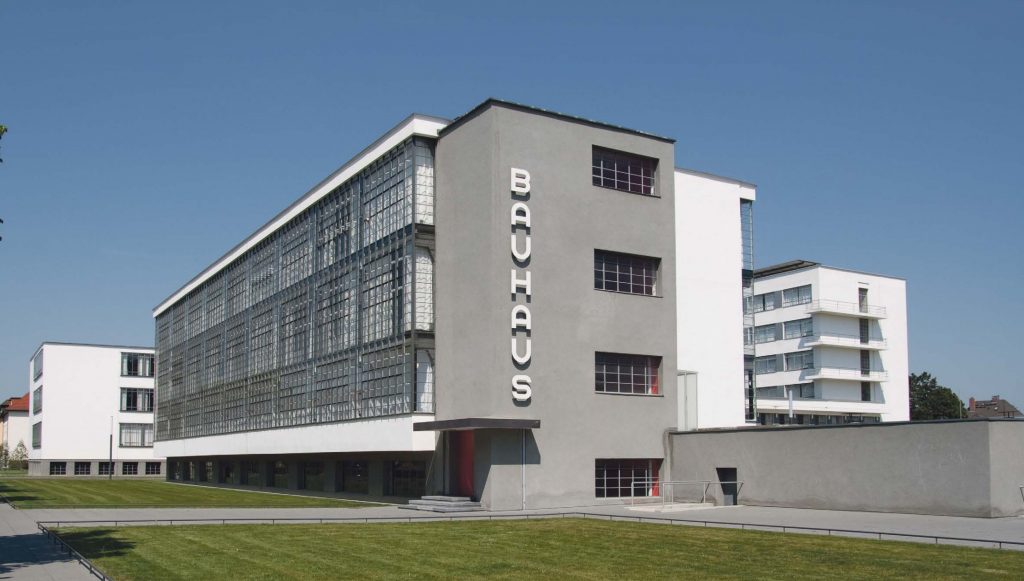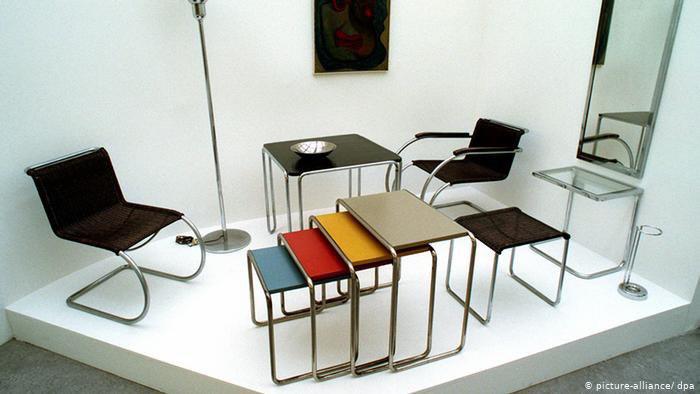Germany and the whole world will commemorate this year the centenary of one of the most famous architecture style of the 20th century.
The history of Bauhaus
The term Bauhaus literally means «construction house» and was originally referring to the school of design which merged the former Grand Ducal School of Arts and Crafts and the Weimar Academy of Fine Art. The Staatliches Bauhaus emerged in 1919 and was led by the architect Walter Gropius.
It is important to note that Bauhaus from the beginning was not only an architectural style, but a school that combined crafts and the fine arts, influences from modernism, the English Arts and Crafts movement, and Constructivism.
The most famous masters and lecturers at the Bauhaus were Hannes Meyer, Ludwig Mies van der Rohe Josef Albers, Anni Albers, Herbert Bayer, Alfred Arndt, Marlene Brandt, Otti Berger, Friedrich Engemann, Marcel Breuer, Carl Fieger, Lyonel Feininger, Johannes Itten, Wassily Kandinsky, Paul Klee, Adolf Meyer and others.

Walter Gropius’ Dessau Bauhaus building
The principles of Bauhaus
We collected for you the main principles of the movement, some of them are included in its manifesto (1919).
- No border between artist and craftsman. In a pamphlet for an April 1919 exhibition, Gropius stated that his goal was «to create a new guild of craftsmen, without the class distinctions which raise an arrogant barrier between craftsman and artist». It is said in the manifesto, that «architects, sculptors, painters, we must all turn to the crafts!».
- The artist is an exalted craftsman. «In rare moments of inspiration, moments beyond the control of his will, the grace of heaven may cause his work to blossom into art. But proficiency in his craft is essential to every artist. Therein lies a source of creative imagination».
- «Form follows function». According to this idea, simple but elegant geometric shapes were designed based on the intended function or purpose of a building or an object. Though the functionality needn’t be boring as we can see from the Bauhaus buildings.
- Gesamtkunstwerk or the ‘complete work of art’. Gesamtkunstwerk means a synthesis of multiple art forms such as fine and decorative arts. A building and its architecture was only one part of the concept. The other part is design.
- True materials. Materials should reflect the true nature of objects and buildings. Bauhaus architects didn’t hide even brutal and rough materials.
- Minimalism. Bauhaus artists favoured linear and geometrical forms, avoiding floral or curvilinear shapes.
- Emphasises on technology. Bauhaus workshops were used for developing prototypes of products for mass production. The artists embraced the new possibilities of modern technologies.
- Smart use of resources. Bauhaus ideology is characterised by the economic way of thinking. The representatives of the Bauhaus movement wanted to achieve a controlled finance, productive time-consuming projects, precise material use, and a spare space.
- Simplicity and Effectiveness. There is no need for additional ornamenting and making things more and more ‘beautiful’. They are just fine as they are.
- Constant development. Bauhaus is all about new techniques, new materials, new ways of construction, new attitude – all the time. Architects, designers, and artists have to invent something new all the time. Thus Bauhaus influenced the new forms of arts like graphic design which emerged 100 years ago. Bauhaus also led to the emergence of new forms of interior design.

Bruno House, 3 Strauss Street, Tel Aviv by Ze’ev Haller, 1933
While Bauhaus itself was operational from 1919 to 1933 its ideals are still spread worldwide and relevant. For example, the concept of the well-known and popular modular IKEA furniture wasn’t born in Sweden. It was inspired by the classic works of Bauhaus designers.









